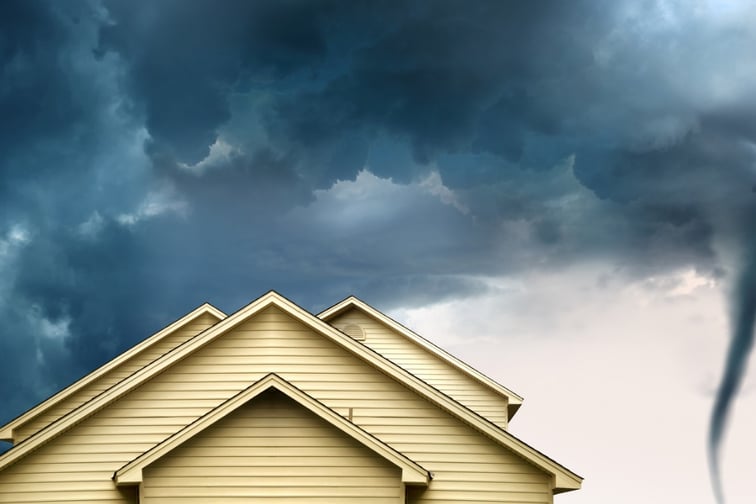

The Alberta tornado that formed near Didsbury on Canada Day was one of the strongest seen in the province in recent history, but its rural path saved insurance companies from a costly hit and minimised any wider economic or human impact.
“In Alberta, and across the prairies, we do see dozens of storms every year, and this was a particularly powerful tornado, that luckily did impact a rural area,” Insurance Bureau of Canada (IBC) national director of consumer and industry relations Rob de Pruis told Insurance Business. “Otherwise, the damages could have been far greater – when we compare that to other events, this was a smaller scale, localized event.”
No lives were lost when the powerful tornado, rated at an EF4 on the Fujita scale, touched down in Didsbury on July 1.
Just 21 ‘violent’ tornadoes rated at f/EF4 or higher have touched down in Canada since records began, while the Didsbury tornado was the strongest seen in Alberta in 36 years, according to an initial report from The Northern Tornadoes Project (NTP), in collaboration with the ECCC Prairie and Arctic Storm Prediction Centre.
Twelve (12) residences were hit by the tornado, of which three were destroyed, four were left uninhabitable, and five more were damaged, according to the NTP report.
At a nearby farm, equipment was flung across the property. Among this was a combine weighing nearly 10,000kg that was first thrown at least 50m. The heavy piece of machinery then continued to roll for up to 100m.
The July 1st tornado near Didsbury, AB has been rated EF-4. A team of ECCC meteorologists collaborating with @westernuNTP visited the site and completed a storm damage assessment.
— ECCC Weather Alberta (@ECCCWeatherAB) July 4, 2023
See our full report here: https://t.co/Z9z1RHshuO#abstorm pic.twitter.com/5cAk0oh8nK
Despite the tornado’s power, the claims impact will be muted. IBC has no plans to conduct a formal industry survey or to quantify losses, according to de Pruis, who is based in Edmonton, Alberta.
Claims adjusters have been assigned and the claims process has begun, de Pruis confirmed. Given wind damage is covered under standard home and business insurance policies in the province, insurers will be expecting to field claims.
Wind damage is also offered as an optional coverage for vehicles and farm machinery.
“Wind is a common occurrence in Alberta, and across the prairies, and we see dozens of these storms a year that happened and can cause significant damage, like we saw for a number of properties in this event,” de Pruis said.
Canada is no stranger to tornadoes. In 2022, 29 caused “significant damage” and with 117 of the weather events recorded, it was a record-tying year for Canadian tornado activity, according to the NTP.
Alberta has previously been home to one of the costliest tornadoes since records began. The 1987 tornado that hit Edmonton caused losses of $307 million, according to IBC data.
When tornadoes form in densely populated areas they can have a devastating economic and human cost. The below tornadoes, according to IBC and CatIQ data, resulted in damage costing tens of millions of dollars to hundreds of millions of dollars:
Canada’s costliest weather event last year was the freak derecho that ripped through parts of Ontario and Quebec, causing 12 fatalities and leaving destruction in its wake. The IBC has estimated insured losses of around $1 billion from the storm, making it the sixth costliest Canadian severe weather event in recorded history.
“The derecho that impacted Ontario and parts of southern Quebec, that was thousands of insurance claims and caused about a billion dollars in insured damage,” de Pruis said.
The insurance cost of severe weather events last year was $3.1 billion, and this included an $800 million hit from Hurricane Fiona.
“From 2001 to 2010, the annual average was about $632 million, so now over this past decade, we’re at $2.2 billion and last year we were at $3.1 billion,” de Pruis said.
“So comparatively speaking, [the Canada Day Alberta tornado] was not significant in terms of overall severe weather damage that we’re seeing or compared to other big events like the derecho.”
With severe weather events increasing in frequency and severity, de Pruis urged all stakeholders – from government, to the insurance industry, to individual residents – to work together on resilience.
“It’s a reminder that we need to be better prepared as a country, and even individuals need to take some responsibility and accountability to building their own resilience for not only wind events, but other types of events that we can see, including hail, flood, and wildfire,” de Pruis said.
Share your thoughts on the Canada Day Alberta tornado in the comments below.
